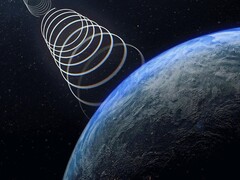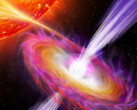Recently, unexplained signals have been discovered beneath the ice in Antarctica. And it would appear that they have passed through matter as if it did not exist, thereby defying the laws of current physics.
It should be noted that, according to current physics, if a radio signal travels through thousands of kilometers of rock, it should be weakened when measured by various advanced instruments. In other words, it would be virtually undetectable. But in this case, these signals arrived clearly at an angle of 30° below the horizon, which is normally impossible without any loss of power.
Through this, a prime suspect has been identified and is a potential candidate for defining the nature of these signals. These are neutrinos, which are often referred to as ghost particles. It should be noted that they have the peculiarity of passing through matter without suffering any consequences, and their detection is very rare, even though the ANITA program, located at an altitude of 40 km, is specifically designed to detect them.
But while this could provide a reliable lead, that is not the case. Researchers at Penn State University point out that the shape of these unknown signals does not correspond to that of neutrinos. The same is true of their position and the intensity emitted.
However, another hypothesis has emerged, although it is somewhat fictional. This hypothesis suggests that it is a kind of dark matter, which is invisible and makes up 85% of the universe.
On this subject, scientists believe that dark matter is composed of particles that never interact with each other, making them almost impossible to detect. And if these signals come from this source, there is no doubt that the discovery would be unique and would bring new opportunities for scientists.
In any case, it is necessary to wait for new studies and observations to determine the origin of these signals. This will be done with the help of a more sensitive detector called PUEO, which is still in the development phase.
Source(s)
Techno-Science (in French), Physical Review Letters














